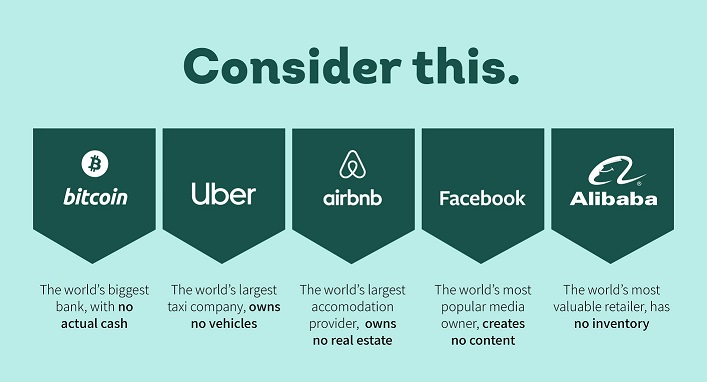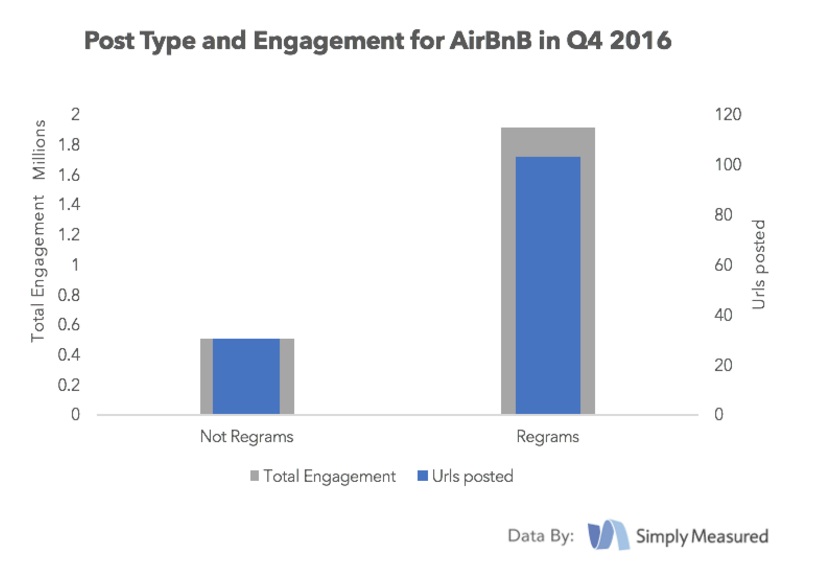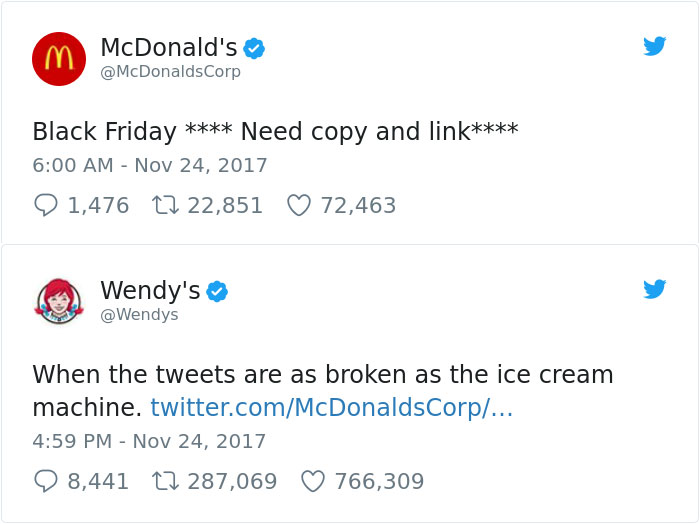
Your association needs a strong digital presence to stand out from the crowd. In fact, it’s estimated that you only have seven seconds to grab someone’s attention before they click away to the next website. With such a short time period to keep your users engaged, you’ll need a solid web design.
A well-designed website can help your association convert prospective members into applicants and retain existing members’ interest in your organization. As a result, you’ll have a thriving member base, allowing you to reach your objectives and grow at scale.
However, if you’re new to web development, creating your association’s website can feel overwhelming. With the right tools and strategies, you can jumpstart your web design and confidently build the association website of your dreams. Use these essential practices to boost existing members’ support and bring new people to your organization:
- Use consistent branding.
- Adhere to accessibility guidelines.
- Add an intranet network and private pages.
- Ensure your website is mobile friendly.
Before diving into these tips, keep in mind that a content management system designed specifically for associations will arm you with the tools and features needed for your industry. Let’s begin.
1. Use consistent branding.
Your association’s brand is made up of your mission, values, tone, and visual elements like logos, fonts, and color schemes. These elements work together to show the world what your association is all about. That’s why your website’s branding should be consistent with other public-facing materials from your association, like your marketing collateral and social media pages.
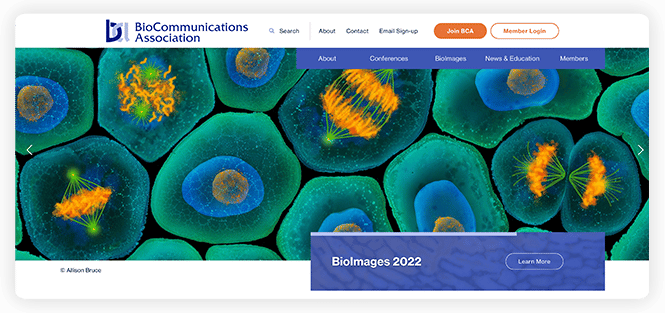
According to Morweb’s guide to web design best practices, branding is crucial to your website’s success for two reasons:
- It builds online visibility in your community and beyond. Good branding helps with publicity, so if you’re looking to recruit more members or get people to register for your upcoming conference, having a consistent brand will help them find you on the web.
- It helps your association appear professional and organized. A generic website looks less put together and reduces credibility. Instead, use branding to show that you’re a reputable organization providing an excellent member experience.
If you’re struggling to identify what your association’s brand actually is or feel like it’s outdated, it might be time for a thorough brand refresh. Revisiting and re-evaluating your brand in these cases can help your team streamline your public messaging and increase your association’s brand recognition among your target audience.
2. Adhere to accessibility guidelines.
One critical component of good web design is accessibility. Having an accessible website means that people of all abilities are able to easily navigate and engage with your website’s content.
Here are some easy ways to put inclusivity at the forefront of your digital strategy:
- Use text and graphics that have a high contrast ratio. A high contrast ratio makes it easier for people with visual impairments to read your web content. For example, black text on a white background stands out and ensures it’s easier to read the featured content.
- Choose easy-to-read fonts. No one likes to waste time deciphering a complicated font. Keep things simple by choosing a sans-serif font, as these are typically better for web content.
- Add alt-text to images and graphics. Alt-text, or alternative text, is added to the HTML of images or graphics on a website, providing a description of the image. This ensures that visitors using a screen reader won’t have any gaps in their browsing experience.
- Offer closed captioning and transcripts for multimedia elements. If you’re including videos or podcasts on your websites, create a complete transcript so people with hearing disabilities can still interact with your content. You can also use free online tools to provide closed captioning on videos.
- Include an accessibility widget. The right CMS for associations will allow you to add an accessibility widget to your website. This puts power in the hands of your website visitors, giving them the ability to change the coloring of the website to greyscale, increase the font size, and highlight links for easy access.
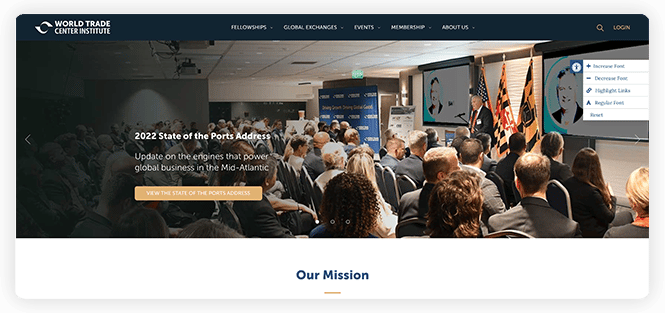
An accessible website will allow you to connect with people of all abilities who might be interested in working with or joining your association. Plus, your reputation will likely get a healthy boost when people see you’re making a concerted effort to welcome every visitor to your site.
To stay up to date with current accessibility standards, make sure to actively review the Web Content Accessibility Guidelines. Created by the World Wide Web Consortium, these guidelines can help your association evolve its digital strategy to meet growing web accessibility initiatives. Use an association-specific CMS to easily implement these changes without having to code.
3. Add an intranet network and private pages.
One of the greatest benefits of association membership is the opportunity to network with other professionals. To promote professional development and connect members with each other, add members-only resources, like member directories, forums, job boards, private event pages, or a members-only blog, to your website.
With a CMS built for associations, you can easily keep these sensitive and exclusive parts of your website secure by creating a password-protected intranet network. This will help you establish a strong community within your association and prove to your members that being part of your organization is worthwhile.
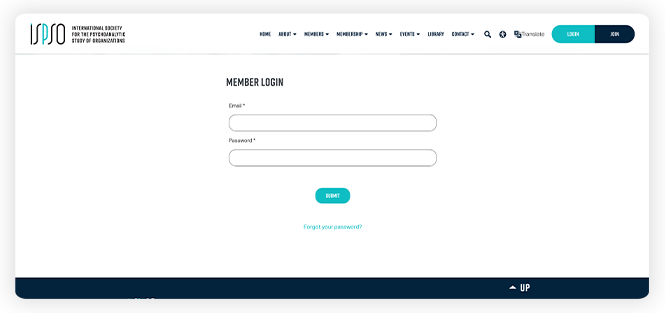
Here are some tips to ensure that your members-only web resources stay secure:
- Monitor account registration and deny any suspicious-looking registration attempts.
- Encourage your members to regularly update their passwords.
- Consider requiring a two-factor authentication sign-in process to preserve the security of your site.
On top of providing valuable information and resources to your members, emphasizing a secure intranet network also shows your current and prospective members that you’re a trustworthy organization. People will be more willing to give you their contact information or payment information when they feel confident in your web security measures.
4. Ensure your website is mobile friendly.
With people spending more time on their phones than ever, it’s a good idea to optimize your website for mobile users. This can help your organization expand its reach to a mobile audience and create a smooth experience for supporters interacting with your content on any device.
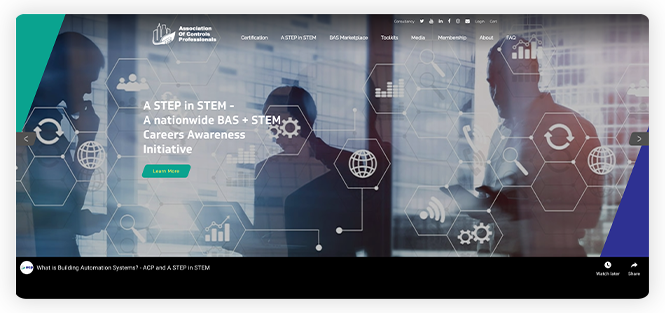
Here are a few things you can do to optimize your site for mobile devices:
- Use a CMS that takes care of mobile responsiveness automatically.
- Make your donation or dues pages “thumb friendly” by including drop-down menus and single input areas.
- Ensure pop-up windows scale to mobile devices so that website visitors can easily exit out of them.
- Compress images to increase your website’s load speed.
When your website is mobile friendly, it is much easier for your association’s members to use it on a regular basis. Plus, a mobile-friendly website can encourage users to share your content straight from their phones, whether they’re emailing a webinar registration form to a colleague or sharing a blog post on social media.
The Gist
Your website serves as an invaluable marketing tool and resource for members. Even if you don’t have any web development experience, these essential tips can help you create an engaging and comprehensive website. Conduct research to find and invest in a CMS with association-specific features so you can easily create a strong digital presence tailored to your audience.
This is a guest post from Murad Bushnaq

Murad Bushnaq is the Founder and CEO of Morweb. Since its inception in 2014, Murad has acted as Creative Director and Chief Technologist to help nonprofits spread their vision online through engaging design, intuitive software and strategic communication.
The post 4 Best Practices for Association Web Design appeared first on Marketing Insider Group.


